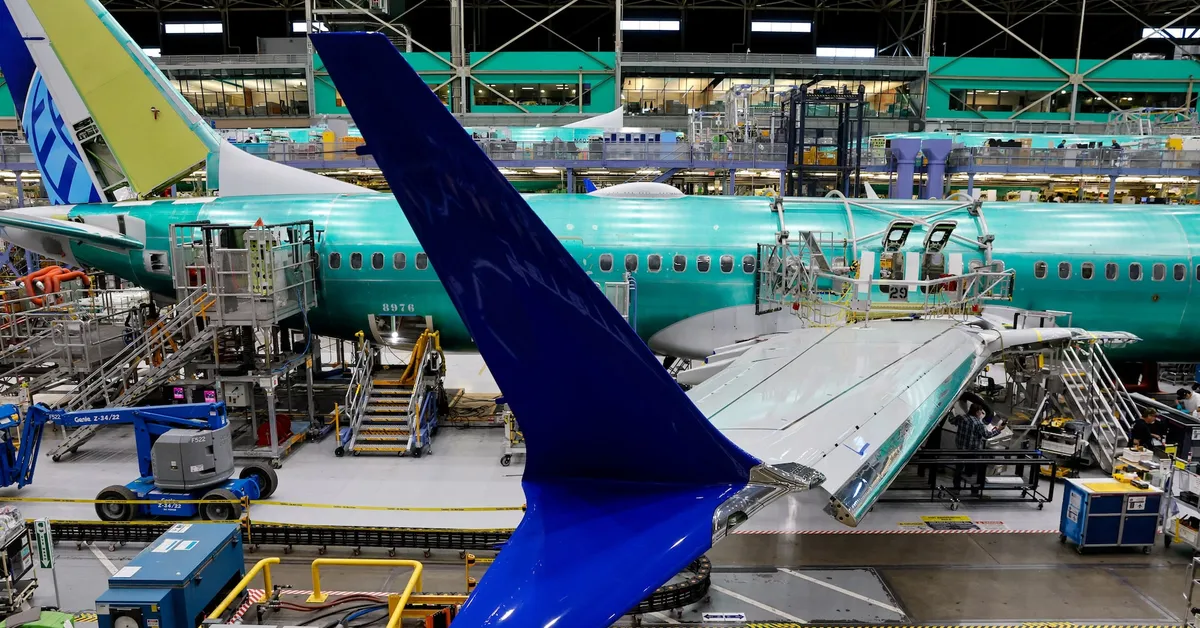
As Boeing navigates through a challenging financial landscape, the increase in deliveries of its popular single-aisle airplane, the 737, plays a pivotal role in restoring the company's financial stability. Following years of production disruptions and crises that have plunged Boeing into significant debt and losses, this strategic move is essential for the company's recovery.
On Friday, the Federal Aviation Administration (FAA) announced that its safety inspectors had conducted extensive reviews of Boeing's production lines. This thorough evaluation is a crucial step to ensure that the planned small production rate increase is executed safely. FAA Administrator Bryan Bedford reached out to Boeing's CEO, Kelly Ortberg, confirming the planemaker's capability to raise the production rate to 42 planes per month, according to a source familiar with the discussions.
Boeing is poised to swiftly boost its production in response to the FAA's approval. Workers at the company's Seattle-area factories have already started preparing for this increase by adding equipment aimed at enhancing production capacity. The company expressed its appreciation for the efforts of its team, suppliers, and the FAA, emphasizing their commitment to safety and quality as they ramp up production.
Following the announcement of the production increase, Boeing shares rose by 1.2% in after-hours trading. Historically, Boeing has achieved higher production rates for the 737, but the current supply chain environment presents a more complex and challenging scenario. Issues such as shortages in forgings, castings, engines, and interiors have plagued planemakers in recent years. Aerospace analyst Glenn McDonald highlighted that supply chain problems are now more sporadic and unpredictable compared to the systemic challenges faced before the COVID-19 pandemic.
Boeing appears to be better equipped for this production ramp-up than during previous increases. The company has adopted a cautious approach under enhanced FAA oversight, focusing on stabilizing and gradually increasing production. In preparation, Boeing has built up substantial inventories of parts and materials, maintaining a buffer against potential supply chain bottlenecks. As of its second-quarter earnings filings, Boeing reported $11 billion in raw materials stockpiled, compared to $6.4 billion in inventory back in 2018 when production levels were higher.
Currently, Boeing faces $53 billion in debt, a stark contrast to its $12 billion debt in 2018. Wall Street analysts predict that Boeing will incur losses again this year, but they project a return to profitability by 2026, potentially marking the company's first profitable year since 2018. This optimistic outlook hinges on the successful execution of their production increase and recovery strategies.
In a significant regulatory update, the FAA recently partially restored Boeing's authority to issue airworthiness certificates for new 737 MAX and 787 airplanes. This authority had been revoked for individual MAX planes in 2019 following tragic crashes in Indonesia and Ethiopia, as well as for wide-body 787 airplanes in 2022 due to production quality concerns. Additionally, a January 2024 incident involving Alaska Airlines prompted a criminal investigation by the U.S. Justice Department, further underscoring the importance of rigorous safety protocols.
As Boeing embarks on this critical phase of increasing production, the combination of strategic inventory management, regulatory compliance, and a focus on safety will be key factors in determining the company's path to recovery.